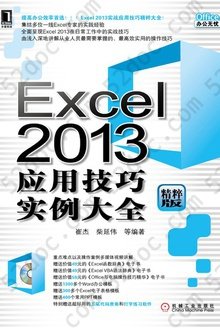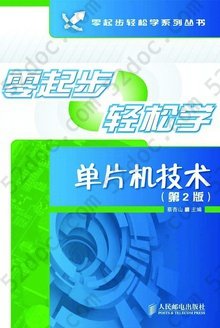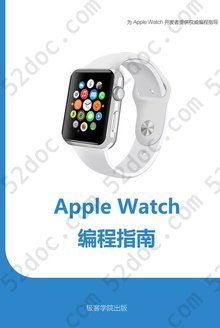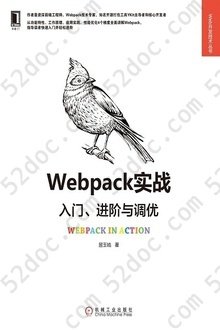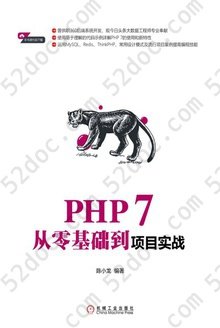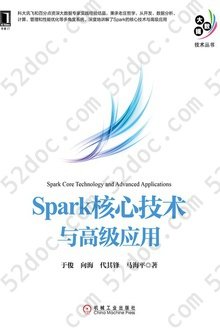注重体验与质量的电子书资源下载网站
分类于: 其它 互联网
简介

Linux Device Drivers: 3rd Edition 豆 9.0分
资源最后更新于 2020-10-29 12:37:40
作者:Jonathan Corbet
出版社:O'Reilly Media
出版日期:2005-01
ISBN:9780596005900
文件格式: pdf
标签: Linux kernel 驱动 driver 计算机 device 内核 drivers
简介· · · · · ·
Device drivers literally drive everything you're interested in--disks, monitors, keyboards, modems--everything outside the computer chip and memory. And writing device drivers is one of the few areas of programming for the Linux operating system that calls for unique, Linux-specific knowledge. For years now, programmers have relied on the classic Linux Device Drivers from O'Rei...
目录
Preface
Jon's Introduction
Alessandro's Introduction
Greg's Introduction
Audience for This Book
Organization of the Material
Background Information
Online Version and License
Conventions Used in This Book
Using Code Examples
We'd Like to Hear from You
Safari Enabled
Acknowledgments
1. An Introduction to Device Drivers
1.1. The Role of the Device Driver
1.2. Splitting the Kernel
1.3. Classes of Devices and Modules
1.4. Security Issues
1.5. Version Numbering
1.6. License Terms
1.7. Joining the Kernel Development Community
1.8. Overview of the Book
2. Building and Running Modules
2.1. Setting Up Your Test System
2.2. The Hello World Module
2.3. Kernel Modules Versus Applications
2.4. Compiling and Loading
2.5. The Kernel Symbol Table
2.6. Preliminaries
2.7. Initialization and Shutdown
2.8. Module Parameters
2.9. Doing It in User Space
2.10. Quick Reference
3. Char Drivers
3.1. The Design of scull
3.2. Major and Minor Numbers
3.3. Some Important Data Structures
3.4. Char Device Registration
3.5. open and release
3.6. scull's Memory Usage
3.7. read and write
3.8. Playing with the New Devices
3.9. Quick Reference
4. Debugging Techniques
4.1. Debugging Support in the Kernel
4.2. Debugging by Printing
4.3. Debugging by Querying
4.4. Debugging by Watching
4.5. Debugging System Faults
4.6. Debuggers and Related Tools
5. Concurrency and Race Conditions
5.1. Pitfalls in scull
5.2. Concurrency and Its Management
5.3. Semaphores and Mutexes
5.4. Completions
5.5. Spinlocks
5.6. Locking Traps
5.7. Alternatives to Locking
5.8. Quick Reference
6. Advanced Char Driver Operations
6.1. ioctl
6.2. Blocking I/O
6.3. poll and select
6.4. Asynchronous Notification
6.5. Seeking a Device
6.6. Access Control on a Device File
6.7. Quick Reference
7. Time, Delays, and Deferred Work
7.1. Measuring Time Lapses
7.2. Knowing the Current Time
7.3. Delaying Execution
7.4. Kernel Timers
7.5. Tasklets
7.6. Workqueues
7.7. Quick Reference
8. Allocating Memory
8.1. The Real Story of kmalloc
8.2. Lookaside Caches
8.3. get_free_page and Friends
8.4. vmalloc and Friends
8.5. Per-CPU Variables
8.6. Obtaining Large Buffers
8.7. Quick Reference
9. Communicating with Hardware
9.1. I/O Ports and I/O Memory
9.2. Using I/O Ports
9.3. An I/O Port Example
9.4. Using I/O Memory
9.5. Quick Reference
10. Interrupt Handling
10.1. Preparing the Parallel Port
10.2. Installing an Interrupt Handler
10.3. Implementing a Handler
10.4. Top and Bottom Halves
10.5. Interrupt Sharing
10.6. Interrupt-Driven I/O
10.7. Quick Reference
11. Data Types in the Kernel
11.1. Use of Standard C Types
11.2. Assigning an Explicit Size to Data Items
11.3. Interface-Specific Types
11.4. Other Portability Issues
11.5. Linked Lists
11.6. Quick Reference
12. PCI Drivers
12.1. The PCI Interface
12.2. A Look Back: ISA
12.3. PC/104 and PC/104+
12.4. Other PC Buses
12.5. SBus
12.6. NuBus
12.7. External Buses
12.8. Quick Reference
13. USB Drivers
13.1. USB Device Basics
13.2. USB and Sysfs
13.3. USB Urbs
13.4. Writing a USB Driver
13.5. USB Transfers Without Urbs
13.6. Quick Reference
14. The Linux Device Model
14.1. Kobjects, Ksets, and Subsystems
14.2. Low-Level Sysfs Operations
14.3. Hotplug Event Generation
14.4. Buses, Devices, and Drivers
14.5. Classes
14.6. Putting It All Together
14.7. Hotplug
14.8. Dealing with Firmware
14.9. Quick Reference
15. Memory Mapping and DMA
15.1. Memory Management in Linux
15.2. The mmap Device Operation
15.3. Performing Direct I/O
15.4. Direct Memory Access
15.5. Quick Reference
16. Block Drivers
16.1. Registration
16.2. The Block Device Operations
16.3. Request Processing
16.4. Some Other Details
16.5. Quick Reference
17. Network Drivers
17.1. How snull Is Designed
17.2. Connecting to the Kernel
17.3. The net_device Structure in Detail
17.4. Opening and Closing
17.5. Packet Transmission
17.6. Packet Reception
17.7. The Interrupt Handler
17.8. Receive Interrupt Mitigation
17.9. Changes in Link State
17.10. The Socket Buffers
17.11. MAC Address Resolution
17.12. Custom ioctl Commands
17.13. Statistical Information
17.14. Multicast
17.15. A Few Other Details
17.16. Quick Reference
18. TTY Drivers
18.1. A Small TTY Driver
18.2. tty_driver Function Pointers
18.3. TTY Line Settings
18.4. ioctls
18.5. proc and sysfs Handling of TTY Devices
18.6. The tty_driver Structure in Detail
18.7. The tty_operations Structure in Detail
18.8. The tty_struct Structure in Detail
18.9. Quick Reference
19. Bibliography
19.1. Books
19.2. Web Sites
Index
Jon's Introduction
Alessandro's Introduction
Greg's Introduction
Audience for This Book
Organization of the Material
Background Information
Online Version and License
Conventions Used in This Book
Using Code Examples
We'd Like to Hear from You
Safari Enabled
Acknowledgments
1. An Introduction to Device Drivers
1.1. The Role of the Device Driver
1.2. Splitting the Kernel
1.3. Classes of Devices and Modules
1.4. Security Issues
1.5. Version Numbering
1.6. License Terms
1.7. Joining the Kernel Development Community
1.8. Overview of the Book
2. Building and Running Modules
2.1. Setting Up Your Test System
2.2. The Hello World Module
2.3. Kernel Modules Versus Applications
2.4. Compiling and Loading
2.5. The Kernel Symbol Table
2.6. Preliminaries
2.7. Initialization and Shutdown
2.8. Module Parameters
2.9. Doing It in User Space
2.10. Quick Reference
3. Char Drivers
3.1. The Design of scull
3.2. Major and Minor Numbers
3.3. Some Important Data Structures
3.4. Char Device Registration
3.5. open and release
3.6. scull's Memory Usage
3.7. read and write
3.8. Playing with the New Devices
3.9. Quick Reference
4. Debugging Techniques
4.1. Debugging Support in the Kernel
4.2. Debugging by Printing
4.3. Debugging by Querying
4.4. Debugging by Watching
4.5. Debugging System Faults
4.6. Debuggers and Related Tools
5. Concurrency and Race Conditions
5.1. Pitfalls in scull
5.2. Concurrency and Its Management
5.3. Semaphores and Mutexes
5.4. Completions
5.5. Spinlocks
5.6. Locking Traps
5.7. Alternatives to Locking
5.8. Quick Reference
6. Advanced Char Driver Operations
6.1. ioctl
6.2. Blocking I/O
6.3. poll and select
6.4. Asynchronous Notification
6.5. Seeking a Device
6.6. Access Control on a Device File
6.7. Quick Reference
7. Time, Delays, and Deferred Work
7.1. Measuring Time Lapses
7.2. Knowing the Current Time
7.3. Delaying Execution
7.4. Kernel Timers
7.5. Tasklets
7.6. Workqueues
7.7. Quick Reference
8. Allocating Memory
8.1. The Real Story of kmalloc
8.2. Lookaside Caches
8.3. get_free_page and Friends
8.4. vmalloc and Friends
8.5. Per-CPU Variables
8.6. Obtaining Large Buffers
8.7. Quick Reference
9. Communicating with Hardware
9.1. I/O Ports and I/O Memory
9.2. Using I/O Ports
9.3. An I/O Port Example
9.4. Using I/O Memory
9.5. Quick Reference
10. Interrupt Handling
10.1. Preparing the Parallel Port
10.2. Installing an Interrupt Handler
10.3. Implementing a Handler
10.4. Top and Bottom Halves
10.5. Interrupt Sharing
10.6. Interrupt-Driven I/O
10.7. Quick Reference
11. Data Types in the Kernel
11.1. Use of Standard C Types
11.2. Assigning an Explicit Size to Data Items
11.3. Interface-Specific Types
11.4. Other Portability Issues
11.5. Linked Lists
11.6. Quick Reference
12. PCI Drivers
12.1. The PCI Interface
12.2. A Look Back: ISA
12.3. PC/104 and PC/104+
12.4. Other PC Buses
12.5. SBus
12.6. NuBus
12.7. External Buses
12.8. Quick Reference
13. USB Drivers
13.1. USB Device Basics
13.2. USB and Sysfs
13.3. USB Urbs
13.4. Writing a USB Driver
13.5. USB Transfers Without Urbs
13.6. Quick Reference
14. The Linux Device Model
14.1. Kobjects, Ksets, and Subsystems
14.2. Low-Level Sysfs Operations
14.3. Hotplug Event Generation
14.4. Buses, Devices, and Drivers
14.5. Classes
14.6. Putting It All Together
14.7. Hotplug
14.8. Dealing with Firmware
14.9. Quick Reference
15. Memory Mapping and DMA
15.1. Memory Management in Linux
15.2. The mmap Device Operation
15.3. Performing Direct I/O
15.4. Direct Memory Access
15.5. Quick Reference
16. Block Drivers
16.1. Registration
16.2. The Block Device Operations
16.3. Request Processing
16.4. Some Other Details
16.5. Quick Reference
17. Network Drivers
17.1. How snull Is Designed
17.2. Connecting to the Kernel
17.3. The net_device Structure in Detail
17.4. Opening and Closing
17.5. Packet Transmission
17.6. Packet Reception
17.7. The Interrupt Handler
17.8. Receive Interrupt Mitigation
17.9. Changes in Link State
17.10. The Socket Buffers
17.11. MAC Address Resolution
17.12. Custom ioctl Commands
17.13. Statistical Information
17.14. Multicast
17.15. A Few Other Details
17.16. Quick Reference
18. TTY Drivers
18.1. A Small TTY Driver
18.2. tty_driver Function Pointers
18.3. TTY Line Settings
18.4. ioctls
18.5. proc and sysfs Handling of TTY Devices
18.6. The tty_driver Structure in Detail
18.7. The tty_operations Structure in Detail
18.8. The tty_struct Structure in Detail
18.9. Quick Reference
19. Bibliography
19.1. Books
19.2. Web Sites
Index



